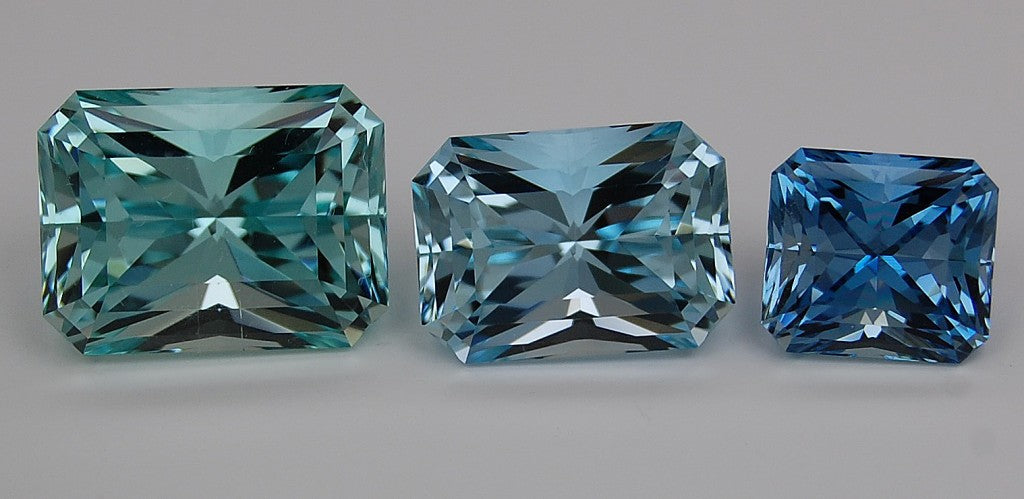FREE 2-DAY SHIPPING TO ARRIVE ON CHRISTMAS EVE
Aquamarine, March's Beautiful Accent To Spring
The birthstone for the month of March, aquamarine, is also the stone for the Scorpio sign of the Zodiac. Aquamarine also represents the 16th and also the 19th wedding anniversaries. The stone is part of the beryl family and is the most common beryl stone, and is somewhat related to the emerald. The aquamarine has a beautiful tonal blue color and looks wonderful with white gold or sterling silver. It is ideal to wear the aquamarine stone as a ring, earrings, or a pendant on a necklace. There is rich history behind this beautiful stone and many beliefs that go along with it as well.
Color
Aquamarine is a beautiful stone that ranges in color from pale blue to teal, although crystal blue is considered the ideal color of the stone. The amount of iron in within the stone itself determines the color it appears to the naked eye. The actual word, "aquamarine" means ocean water in Latin. Aquamarines are usually heat treated using extremely high temperatures, which changes their color permanently and tends to make the stone a clearer blue color.

History
It isn't completely clear when people discovered the aquamarine stone, but there is proof that people wore the stone as jewelry as far back as 500 BC. Because the aquamarine is a stone that represents the sea, sailors believed that it would help to return them home safely while at sea. It also was believed to prevent those aboard from becoming seasick, and helped fishermen catch plenty of fish.
Folklore
During the Middle Ages, it was believed that aquamarine warded off sickness from poisons and helped relieve stress and anxiety. During Roman times, healers thought that aquamarine helped aid in digestion and reduced fluid retained in the body. It was also believed to cure liver disease and therefore be a cure for jaundice as well. They believed that the god of the sea, Neptune, was the creator of aquamarine. They believed that the stone was acquired when it accidentally washed ashore from the possession of a mermaid. Ancient Greeks believed that the stone made the wearer wealthy and happy and aided in marital love. Other beliefs were that aquamarine kept the wearer young and brave, gave them wisdom, and helped them stay happy and healthy.
Cut
Aquamarine is a hard stone that can be worn daily and endure the wear and tear of life. Because it is a hard, clear stone, it is a good one to be faceted. When faceted, the aquamarine will reflect the light and make it sparkle and shine. Some darker stones are not faceted, but cut in a cabochon. This effect is smooth and also allows the stone to look beautiful set in a piece of jewelry. When the stone is formed within layers of the earth that contain other mineral deposits within the same area, aquamarine forms a chatoyancy, also known as a "cat's eye" effect. A chatoyancy makes the stone look a bit like a cat's eye!
Mining Locations
Aquamarine can be found in many different countries all over the world. More inexpensive and differently-shaped aquamarine stones are mined in China. These particular stones take on a flatter shape and make a very unique-looking type of jewelry. Gem quality stones made for jewelry purposes are usually found in Brazil. Other locations where aquamarine is mined include Russia, Sri Lanka, Afghanistan, Pakistan, Kenya, Madagascar, Tanzania, Mozambique, Zambia, and Nigeria.
Famous Aquamarine Stones

One of the largest known aquamarine stones is called the Hirsch Aquamarine. It was not heat treated, so the color is natural and without any enhancements. It weighs almost 110 carats and is currently set with almost 120 diamonds in 18k gold. It is currently part of the collection of the House of Louis XV. The largest cut and polished aquamarine stone is the Dom Pedro Aquamarine. It was mined in Brazil almost 30 years ago. This obelisk-shaped stone is 14 inches tall and 4 inches wide at the base, and it weighs over 4.5 pounds. Its carat weight comes in at an impressive 10,363 carats. It has a tapered facet cut that reflects the light, making it appear to have been lit from within and giving the stone immense sparkle and shine.


